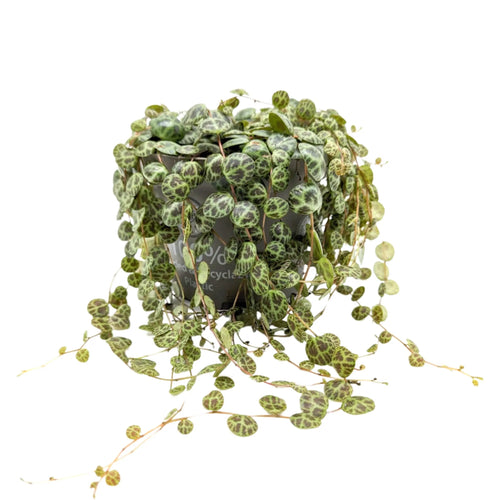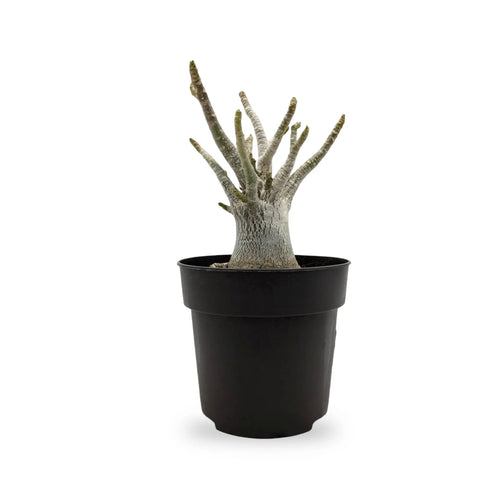Little insects called thrips can harm your indoor houseplants. These bugs seriously injure the plant by eating its sap. Yellow leaves on your houseplants are among the earliest indicators of a thrip invasion.
Left untreated, thrips can seriously damage your plants, causing stunted development or death. Let's explore several ways to spot, treat, and stop thrips on your houseplants indoor. Following these guidelines will help you ensure your plants stay bright and healthy.
Thrip Identification Techniques
Typically less than 1/25 inch long, thrips are little, thin insects. With the naked eye, they can be challenging to see. Typical thrip infection indicators include:
- Thrips consume the sap of the plant. This is the main cause of houseplants' yellow leaves.
- You can find silvery marks or stripes on the leaves where the thrips have dined.
- Usually spotted on the leaves, black dots are the droppings of thrips.
- Thrips can induce twisted or stunted new growth from the inside.
Dealing with Thrips on Indoor Houseplants
Once you find a thrip infestation, you have to move fast. These are a few ways you might handle thrips on your houseplants indoor:
Remove Manually
Look over your plants often for thrips. Preventing a significant infestation mostly depends on early discovery. To remove thrips from the leaves and stems, use a forceful stream of water. Either the washbasin or the shower can be used for this to guarantee you completely wash every part of the plant. To stop the thrips from spreading, prune and throw away badly infected leaves or stems. Eliminating the impacted sections can help your plant recover and drastically lower the thrip population.
Insecticide Soap
An efficient and environmentally friendly fix for thrips is insecticidal soap. Making your own or buying one just requires mixing mild dish soap with water. Directly spray the solution over the infected regions to guarantee complete leaf and stem coverage. Get the underside of the leaves, where thrips usually hide. Treat every few days for two weeks to guarantee all thrips are eradicated.
Neem Oil
Natural insecticide neem oil performs effectively against thrips. Using the label's directions, dilute neem oil with water. Spray the entire plant, paying particular attention to the underside of the leaves. By upsetting the feeding and reproduction cycles of thrips, neem oil kills them. Once a week, apply the neem oil until the infestation is under control. Apart from controlling thrips, neem oil also aids in preventing fungal diseases and other pests, thereby enhancing your plant care schedule.
Sticky Trap Devices
A basic and non-toxic approach to manage thrips is sticky traps. Stuck yellow or blue sticky traps next to your plants. Attracted to these colours, thrips will get caught in the traps. Check and replace the traps routinely as needed. Excellent for monitoring early signs of an infestation, sticky traps help lower the adult thrip population.
Beneficial Predators
One good approach to manage thrips is to bring in natural predators. Feeding on thrips, beneficial insects such as ladybirds, lacewings, and predatory mites can help control their numbers. Garden centres or internet vendors carry these helpful insects for sale. Release them by following the directions in your indoor garden. Maintaining acceptable humidity levels and offering a water source will help guarantee the surroundings are fit for these helpful insects to flourish.
Stop Thrip Infestations
Stopping thrips from invading your houseplants indoors is simpler. The following steps help to prevent thrip damage to your plants:
Regular Inspections
Look over your plants often for any evidence of thrips or other pests. Early identification can potentially stop an actual outbreak. See black droppings, silvery markings, and houseplants yellow leaves. Early problem identification allows you to act quickly and reduce plant harm.
Appropriate Gardener Maintenance
Thrips are more likely to strike stressed-out or diseased plants. Verify your plants get enough nutrients, water, and light. Healthy plants are more likely to have strong resistance to pest infestations. Use a moist towel to get dust and other bugs off your plants' leaves. The first line of protection against thrips and other pests is maintaining your plants in the best shape.
Isolation
Before including fresh plants in your current collection, quarantine them. Separate fresh plants for a few weeks to look for any pest activity. Treat any pests, including thrips, before putting the new plants among your other houseplants indoor. If you discover thrips on any of your plants, separate the infected ones to stop their spread to others. Isolation guards the rest of your indoor garden and helps to control the invasion.
Air Exchange
Healthy plants depend on good airflow, which also helps to lower thrip infestations' probability. By spacing your plants and, if needed, running fans, guarantee appropriate air circulation around them. Steer clear of packing your plants too closely since this would provide a humid environment fit for thrip spread. Good ventilation reduces the attractiveness to pests and helps your plants stay dry.
Natural Ways for Removing Thrip
If you would want natural approaches to control thrips, take a look at the following:
Use garlic Spray
The natural insect-repellent qualities of garlic allow one to discourage thrips. To eliminate any particles, blend a few garlic cloves with water and drain the mixture. With an eye towards the leaves and stems, mist the afflicted plants with the garlic solution. Strong garlic smells discourage thrips and may help lower their numbers. Until the infestation is under control, reapply the garlic spray a few days apart.
Diatomaceous Earth
Made from the fossilised remains of diatoms, a kind of algae, diatomaceous earth is a naturally occurring, non-toxic powder. Dust food-grade diatomaceous earth over the ground surface and around the base of your plants. Diatomaceous earth's sharp particles pierce thrips' exoskeletons, dehydrate them, and kill them. Rely on the diatomaceous earth after watering your plants. For humans and animals, this approach is harmless; against thrips, it is quite powerful.
The End Note
Thrips can be a difficult pest to control on indoor houseplants. Regular inspections, good plant care, and efficient treatment techniques will help you maintain your plants in good health and vigour. Preventing great damage mostly depends on early discovery and quick response. These rules will help you enjoy a rich, green indoor garden and guard your houseplants against thrips.
Are you looking for houseplants indoor in the UK? If yes, then contact Leaf Culture. Browse our website to purchase various indoor plants anytime.









